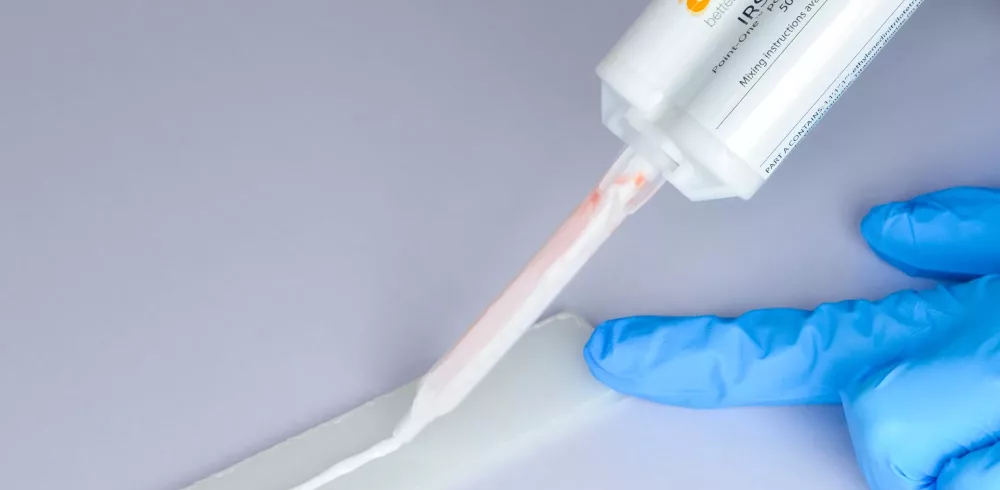From August 24, 2023, the European Parliament’s REACH Restrictions will mean that industrial and professional users of products with a total monomeric diisocyanate concentration of >0.1% must be trained and certified in handling diisocyanates. To help manufacturers using polyurethane adhesives adapt, Intertronics has launched Point-One™ Structural Polyurethane Adhesives, leading edge polyurethanes (PUs) based on micro emission technology. Their concentration of monomeric diisocyanates is <0.1% by weight, so REACH training is not required if manufacturers specify these products. Point-One brings additional health and safety benefits, having very low emissions and few warning icons on the label.
Point-One Structural Polyurethane Adhesives are fast-curing two-part adhesives that form strong, durable bonds in as little as 10 minutes. They are resistant to moisture, fuel, many solvents, and chemicals — offering better chemical resistance than conventional PUs. Able to be sanded in as little as 10 minutes, subsequent painting or assembly processes can be completed within a short time frame. As well as bringing health and safety benefits from their low diisocyanate content, Point-One materials are solvent and VOC free, and have no requirement for a carcinogen warning on the product label as they are not H351 classified.
The range includes IRS 3223-B Point-One Structural Polyurethane Adhesive, which is black in colour and has a working time of 3.5 minutes, and IRS 3221-W Point-One Structural Polyurethane Adhesive, which is white in colour, has a working life of 1.5 minutes, and features excellent UV stability for outdoor use. Both materials offer excellent adhesion to plastics, metals, GRP, ceramics, SMC, wood, plasterboard, concrete, rock, and marble. They are suitable for applications including the interior and exterior automotive aftermarket, caravan and trailer manufacture and repair, and outdoor lighting and signage.
“Polyurethane adhesives are made by reacting diisocyanates and polyols,” explained Ben Swanson, Chief Commercial Officer at Intertronics. “While the diisocyanate is used up during the reaction, and virtually no diisocyanates are found in completed or cured materials, in liquid form they do present health and safety risks. Our new Point-One adhesives present a much lower risk to operators – low enough to not require the new mandated training. We still advocate the relevant risk management and health and safety measures, of course.
“The cost, administrative, and time burden manufacturers face as a result of the new requirement for mandated REACH training could be significant. Specifying Point-One removes the need for training and certification,” added Swanson.
Point-One adhesives are supplied in pre-measured, side-by-side double syringe cartridges (either 50 g or 200 g) alongside static mixing nozzles for straightforward application. The products have good sag resistant properties, allowing vertical application, excellent gap filling properties and are easy to extrude through the static mixing nozzle. The recommended and included IDM2N18 static mixing nozzle is one of the shortest on the market, minimising material waste and giving great dispensing control. The products have a 24-month shelf life in the original sealed cartridge.
The REACH Restrictions aim to minimise the adverse health effects induced by exposure to diisocyanates in the workplace, such as respiratory sensitisation, skin irritation, and occupational asthma. Employers are required to provide adequate training for all employees that come into contact with a substance containing diisocyanates with a total monomeric diisocyanate concentration of >0.1%, and must collect evidence of the successful completion of the programmes. Training certificates last five years, after which they must be renewed.
For more information on Point-One, visit https://www.intertronics.co.
Manufacturing & Engineering Magazine | The Home of Manufacturing Industry News













